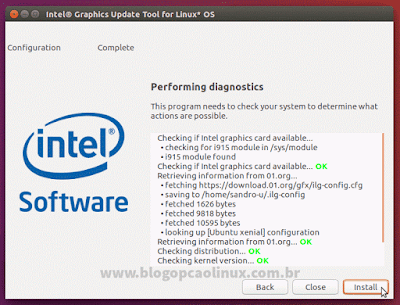Intel 82852 Driver Opengl
This page grew out of a conversation on the Usenet comp.os.linux.hardware newsgroup. It can be frustrating for Free Software users to buy a new graphics card because there is very little information available about 3D/OpenGL graphics support and performance in the Free Software community.
Some users opt to install proprietary graphics card drivers because of the limited support available in current free software drivers. X.Org includes Direct Rendering Infrastructure (DRI) support for a variety of 3D graphics hardware but often doesn't support every feature or doesn't offer performance as fast as that of the proprietary drivers. This website was created for those of us who prefer to use only Free Software or Open Source software. It provides information about video cards with 3D acceleration support and benchmarks to give an idea of their performance. We also provide performance information for cards that rely solely on software emulation for 3D support.Currently Recommended Card for Best 3D Performance. To gather the results in the table below, a simple shell script was proposed Henrik Carlqvist in a and subsequently revised by Michael Mauch and others.
This script uses glxgears to get a frame rate for 3D rendering. We are aware glxgears isn't intended as a benchmark. It's been compared to bogomips for graphics cards. But it is readily available on almost every computer running Xorg and provides an interesting, if non-accurate baseline for comparing hardware. If you can propose something better that will run on as many systems without needing to download and compile special benchmarking tools, please let us know. But see the before emailing to complain that you think glxgears sucks as a benchmark. We already know that.This is the current version of the script:grep VGA /proc/pci lspci grep VGA colrm 1 4; egrep 'model name MHz' /proc/cpuinfo; xdpyinfo egrep 'version: dimensions depth of'; glxinfo egrep -A2 'direct rendering OpenGL vendor'; uname -sr; vblankmode=0 glxgears & sleep 30; killall glxgearsYou can help by running this script on your hardware and reporting the results in the table below.

The goal is to keep the list sorted in descending order by performance based on the glxgears FPS rating. If you're familiar with Wiki syntax, feel free to create an account and add your results directly to the table below. Otherwise, you can and I'll add them. Please note that we are only interested in the results produced by Free Software or Open Source Software. If you are using a proprietary driver your results will not be helpful to us.Note 1: on newer versions of glxgears, it may be necessary to add -printfps to get the FPS number.Note 2: on recent versions of X.Org (7.2 and newer) xdpyinfo reports the XServer version instead of the X.Org version.
Intel 82852 Driver Opengl 10
So X.Org 7.2 XServer 1.3, X.Org 7.3 XServer 1.4 etc. Don't worry about it, just send us the output.:)Note 3: Occasionally some distros don't report everything properly. Looks over your results and if you see some information missing that's in all the other results reported in the table below, try to look it up manually and include it. Thanks!Note 4: The above script will run glxgears at the default priority on your system.
It has been suggested that running it at a higher priority will be more accurate. While this will generate higher numbers, it probably doesn't reflect how your system is used in the real world. If you'd like to try this, the following commands will do it.su rootnice -n -19 sh -c 'glxgears& sleep 30; kill $!' Realistically though, we'd prefer you report the numbers you get at the default priority for two reasons, 1) it makes it easier to compare with the existing data and 2) it better reflects real world usage.Note 5: It turns out that the Linux kernel version does play a role. E.g., the system that achieved 6295fps with Linux-2.6.17 achieves over 8000 fps with 2.6.25.5 (everything else stayed the same); so you might want to mention the version of the kernel in the Notes column.Note 6: It is no longer possible to determine what video driver your system uses from looking at the xorg.conf file on either Fedora or Ubuntu distros of GNU/Linux.

We expect this to be the case with more distros soon. At present we're not aware of any easy way for an end user to determine what video driver they're using on newer GNU/Linux distros. If anyone else knows a way to do this, please enlighten us. Meanwhile, the best we can suggest is to grep /var/log/Xorg.0.log (of Fedora systems at least) for the term “autoconfigured”. You should get a result such as “(= Matched ati for the autoconfigured driver” - this means you're using the ATI video driver.High-end ( ≥ 3000 FPS ) Benchmark Reports. Here are the current results sorted by speed.DRI stands for. If a driver supports DRI, then it can provide 3D / OpenGL hardware acceleration.
When DRI is not supported, the driver will usually rely on the for software emulation of the OpenGL API.The glxgears FPS rating is the highest value recording during the execution of the benchmark.Unless otherwise stated in the notes field, the OS is assumed to be Linux.The X driver name is not determined by the script but can usually be found by examining your X configuration file. Please provide the name of the driver being used and a link to the driver's official page if possible. Graphics CardCPUX versionDriver-NameDRI?GLX ServerResolutionDepthNotesglxgears FPSATI RC410 Radeon Xpress 200Intel Pentium D 2.66GHzX.Org 7.3.0Yesv1.24987 FPSIntel 915GM/GMS/910GML Express Graphics Controller (rev 04)Intel Pentium 1.86GHzX.Org 7.1.1Yesv1.4975 FPSVIA Technologies, Inc.

Code: $ glxinfo (some highlights)direct rendering: YesOpenGL vendor string: Mesa ProjectOpenGL renderer string: Software RasterizerOpenGL version string: 2.1 Mesa 7.9-develSo, no hardware OpenGL rendering.I added Xorg-edgers PPA and apt-updated as mentioned. This left me with a system unable to boot into GDM. DKPG'ing kernel 2.6.36 didnt help me much with this issue.
Using ppa-purge, I went back to the way it was before adding the PPA. Also, I went back to the default maverick kernel.Then, I tried installing some drivers as mentioned. This didn't help either.I don't use xorg.conf, it's completely empty.Does anyone have any idea how I can fix this??Last edited by.zolder; March 13th, 2011 at 07:20 PM.Reason: Solved!
